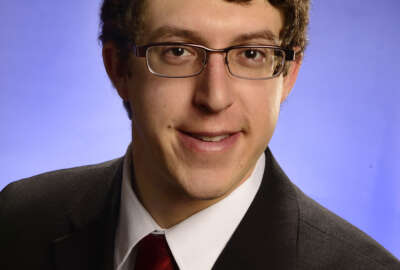
People behind new president’s mgmt. agenda need a morale boost, coalition says
The success of the next president's management agenda will largely depend on having the right senior executives to serve as champions for the administration's g...
The success of the next president’s management agenda will largely hinge on leadership from the very top political and career executives — and the right performance plans to hold those leaders who manage agency goals accountable.
Yet the people most poised to act on and drive the next administration’s agenda could use a morale boost.
That’s one message that a coalition of federal management experts, led by the Performance Institute, will send to both presidential candidates ahead of the upcoming transition. This time, the focus is on moving from a culture of oversight to one of specific and mission-centric outcomes, the Institute said, and that shift should begin with the right people to champion those goals.
The results of the Office of Personnel Management’s most recent exit survey of departing senior executives suggests the next administration will have to make significant strides to boost morale and develop a culture where the SES corps is the main driver behind the president’s agenda.
OPM surveyed 230 departing executives between Aug. 2014 and July 2015. About 54 percent of them said they would recommend the Senior Executive Service to others, down from the previous year’s 62 percent.
A recent report from the Partnership for Public Service and McKinsey & Company indicated similar malaise at the SES, where roughly 55 percent of employees at GS-14 or GS-15 expressed interest in joining the Service.
Roughly 28 percent of departing senior executives said their agencies had some sort of formal succession planning efforts in place. About 40 percent of senior executives said their agencies did succession planning a year before during the same time period.
“We really don’t focus on leadership in the federal government for the career service in the way that we do, for example, in the military where you do have joint duty requirements, where you do have to get advanced schooling and training and development to broaden your base and your networks, build those connections that can help you be successful in your job,” said Jason Briefel, executive director of the Senior Executives Association, at the Performance Institute’s Oct. 17 transitions roundtable in Washington. “It’s much more than just the SES. It’s the way the entire government trains, develops and invests in its people and builds them up.”
Engaging the SES in the president’s management agenda means that top leaders should work with its executives to develop their performance plans and then proactively meet with them to review their progress on both individual and organizational goals, the coalition said.
It’s a practice that, in theory, agencies should already utilize. But in reality, performance plans don’t often relate to the physical execution of the agency and administration’s broader goals, the coalition said.
“Often times career executives are managed by political appointees,” Briefel said. “They don’t take their obligations in the performance management system seriously. In a recent survey SEA conducted, we found there were executives six, nine months into their performance year who didn’t have written performance plans. If political appointees are not fulfilling their responsibilities in managing the SES corps, then they can’t effectively manage the operation.”
Performance plans should not only focus on individual agency goals but also the administration’s broader mission, said Dave Wennergren, executive vice president for operations and technology at the Professional Services Council and former deputy CIO for the Defense Department.
“The performance plan is the place where you can have the outcomes that force agency heads to not step off to [them] selves and do what’s in their agency’s purview,” he said. “This is the place where you make it a reality about this idea of the fact you have a job to help make better government across the Executive Branch.”
The next administration should also put some “star power” behind its management agenda to send a message to its SES corps, the coalition said.
For example, President George W. Bush personally announced his own management agenda and appeared before the President’s Management Council on several occasions.
During the Clinton administration, Vice President Al Gore was the face behind the administration’s management agenda. He visited departments personally and handed out Hammer Awards to the individuals and teams of federal employees behind the success of certain agency programs.
The Performance Institute is the latest organization to weigh in with its own suggestions for the next administration. Its report included six areas as key focus points for the next administration’s management agenda:
- Executive talent and leadership.
- Performance accountability and data-driven decisions.
- Enterprise transformation.
- Partnerships and acquisition.
- Federal workforce engagement.
- Risk management.
Copyright © 2024 Federal News Network. All rights reserved. This website is not intended for users located within the European Economic Area.
Nicole Ogrysko is a reporter for Federal News Network focusing on the federal workforce and federal pay and benefits.
Follow @nogryskoWFED






